This article is part of our in-depth Meat, Fish & Poultry feature.
Lidl and Aldi didn’t always do fish well. While meat, fruit and vegetable ranges have long been a powerful aspect of the discounters’ rise against the mults, a lack of chilled fish was a serious weakness - until recently.
Both discounters have transformed their position in the category, establishing strong ranges and growing volumes and market share fast. So what compelled the discounters to up their game? How has their success affected the market? And what are they planning to do next?
The chilled fish category has grown by 4.1% in value and 3.8% in volume year on year [Kantar Worldpanel 52 w/e 28 February 2016]. And within this, Aldi and Lidl have enjoyed impressive growth, says Seafish market analyst Julia Brooks.
“Aldi and Lidl are encouraging consumers to spend more money, more frequently, on more chilled fish in their stores.
“Both have seen substantial growth in fresh fish sales over the past couple of years. Their combined fresh fish sales value grew by 218% in the two years to 30 January 2016, with sales volume experiencing a 207% jump over the same period [Nielsen Homescan w/e 30 January 2016].”
Lidl first started trialling chilled fish with three lines in Scottish stores back in November 2011. After proving a success, the range was rolled out to other UK regions over the course of two and a half years, and eventually expanded to 16 lines.
“Throughout the store, the focus was moving to fresh, and our aim was to be a destination for fresh produce,” says Alexandra Scholes, fish and seafood buyer for Lidl UK. “After the successful introduction of fresh meat a few years before, fish was a natural progression.”

Fresh fish is the only sector of the fish market in growth, she adds, which shows how important it is to shoppers.
Salmon, which is challenging tuna as the nation’s favourite fish, forms the cornerstone of both retailers’ ranges.
Aldi’s fresh salmon range has grown over 33% in the last year, says Tony Baines, joint managing director for corporate buying. “We have seen strong growth in the fresh fish category over the past 12 months and therefore are investing significantly in this area.”
“Aldi and Lidl are encouraging consumers to spend more money, more frequently, on more chilled fish in their stores.”
Both Aldi and Lidl have extensive ranges of chilled smoked salmon - a product that drove the 6.6% value growth in smoked fish sales across the market last year. Lidl says its lightly smoked salmon fillets, which are cold smoked for three hours and must be cooked before eating, have “exceeded sales expectations”. Aldi offers a similar product in its Specially Selected range, and four variants of smoked mackerel alongside Scottish smoked salmon.
Added-value products also continue to, well, add value to the category, growing 7.5% on volumes up 7.2% [Kantar], the biggest rise outside battered. Aldi and Lidl are both strong in this area, which was stimulated in the wider market by brands such as The Saucy Fish Co (its product was allegedly copied by Aldi in a case that ended up in court and Aldi withdrew its lines).
Aldi’s added-value lines include salmon fillets with various sauces, and cooked mussels with white wine sauce or garlic butter.
Lidl offers salmon with hollandaise or sweet chilli variants, though its weekly specials are more adventurous.
“Our ongoing products are aimed at the everyday meal with a range that will appeal to the largest number of customers,” says Lidl’s Scholes. “But we’re constantly scanning the market for new trends and flavour profiles and our weekly special fish line allows us to be a bit more creative. Here we can test new flavour profiles and offer customers something a bit different, for example Lighthouse Bay salmon fillets with an orange and fennel sauce or our Italiamo MSC hake fillets with a red Genovese style sauce.”
The discounter’s pre-packed formats favour convenience at a time when most of the mults are experiencing volume decline in loose fresh fish, with counter sales falling despite keener prices.
By tailoring their fresh fish offer to take advantage of growth areas in the category, both discounters have achieved strong growth and made huge leaps in market share. “Aldi and Lidl have increased their market penetration of the fresh fish sector by 81% to 34.5% over the two years to January 2016, and their fresh fish purchase frequency has increased by 49%,” says Brooks [Nielsen Homescan w/e 30 January 2016].
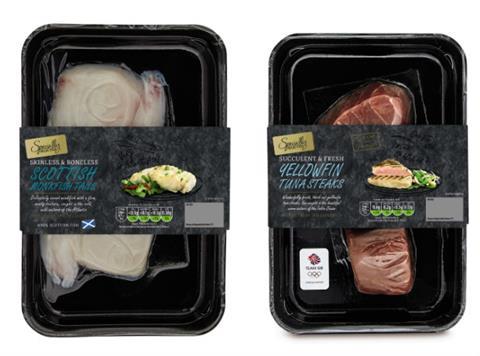
This is having an inevitable impact on price. The chilled fish category, which previously resisted the falling price trend affecting other proteins, even tipped into deflation at the end of last year, with average prices per kilo down 1.1% in the last quarter [Kantar Worldpanel 12 w/e 3 January 2016]. This was despite a drop in promotions over the period, suggesting the deflation was a reduction in base prices alongside more purchases in lower-price tiers.
Since then, fresh fish has moved back into inflation, with average prices across species up by 4p per kilo, over the year [Kantar Worldpanel 52 w/e 28 February 2016]. But prices are down on many of the species offered in the discounters’ core ranges, with average salmon prices per kilo down 3.6%, while haddock (-3.4%), cod (-3%), mackerel (-5.6%) and fish selections (-1.9%) are similarly deflated [Kantar].
And the discounters continue to transform their ranges to keep ahead of market trends. “We redesigned the range towards the end of last year, making the fish the focus and not the picture on the label,” says Scholes. “Clear colour coding and headers ensure customers can differentiate between products. And all of our fillets are now in microwaveable packaging, so they are easy and convenient to cook.”

Flying the sustainability flag
One fishy organisation that has reason to celebrate the discounters’ success in fresh fish is the Marine Stewardship Council. At the last count, both discounters were offering more MSC-certified SKUs than M&S, The Co-op, Tesco, Asda and Morrisons. Lidl more than doubled its range of MSC-certified seafood in the year to January 2016, becoming the UK’s third-largest retailer of MSC produce; 53% of Lidl’s wild-caught range is now certified, and Aldi is right behind it with 37%.
“The discounters, especially Lidl, have expanded their fresh ranges quite aggressively and have made sure there are eco-labels on their packs wherever they can,” says Toby Middleton, MSC programme director for the UK and North Atlantic.
“The typical white fish species, cod and haddock, are leading the charge in terms of opening that category up in their stores.”
In a game of word association, ‘sustainability’ might not be the first word that appears next to ‘discounters’. But that’s not fair, according to Middleton.
“Looking at the history of our relationship with them across Europe and globally, they have always played a very strong market-leading role in their sustainable seafood policies, putting certification at the centre of that,” he says.
“The relationship started in their German market; the consumption there is a lot of pollock and herring, which are both certified in high volumes, and the market was able to move very quickly. In the UK we have a slightly more diversified species consumption, but as and when other species and categories are available in other markets, we’ve seen them waste no time putting the label on.”
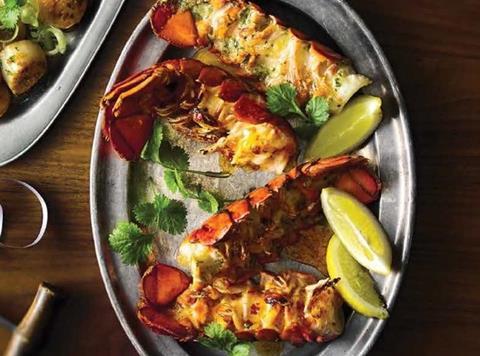
And sustainable doesn’t necessarily have to mean expensive - as Lidl proved when it became the first supermarket to launch MSC-certified lobster for just £4.99 last October. The wild-caught whole lobsters, sourced from a fishery in New Brunswick, Canada, were even on sale for £2.99 in March (although shoppers needed to have clipped a voucher).
The cost of MSC certification per kilo of end product is actually very small, says Middleton. And while fisheries will hope for a financial premium for demonstrating sustainability, consumers expect their seafood to be sustainable and don’t want to pay a premium.
“The discounters, especially Lidl, have expanded their fresh ranges quite aggressively and have made sure there are eco-labels on their packs wherever they can.”
Having shaken up the category as well as supporting its continued survival, the discounters’ next moves will be closely watched. Tellingly, both appear to be ramping up their premium offer.
Aldi this month launched fresh sea bass fillets, tuna steaks and monkfish tails in stores. “We’re hoping to build on the success of our fresh fish offer by introducing a range of premium fresh products,” says Baines.
Meanwhile, Lidl is eyeing the special occasion opportunity, says Scholes. “We tested whole salmon for the first time last Christmas and were really pleased with the sales,” she says. “We ran it again for Easter 2016 and are looking into whole seabass for the summer season.”
Whole lobsters, salmon and seabass? They might not have done fish well a few years ago, but that weakness can now be considered a strength. And it’s another way for the discounters to hook more customers away from the mults.




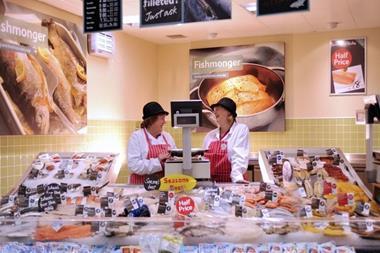
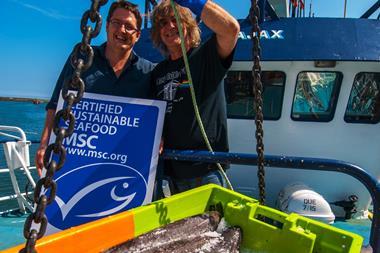
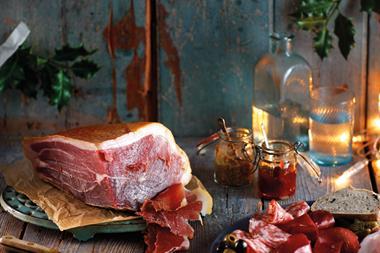
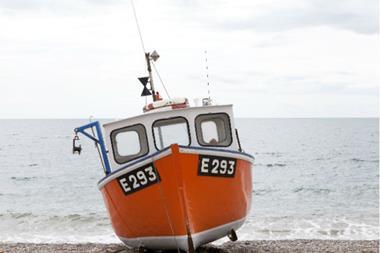
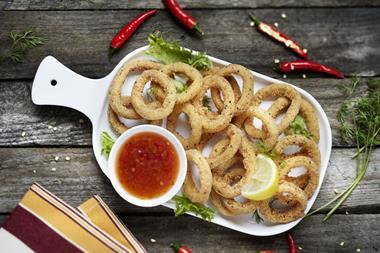
No comments yet